Find the best budget patio ideas for a cost-effective garden
Use budget patio ideas to curate an update and refresh of a garden space without breaking the bank. From paving to planting for pennies, discover our tip tops
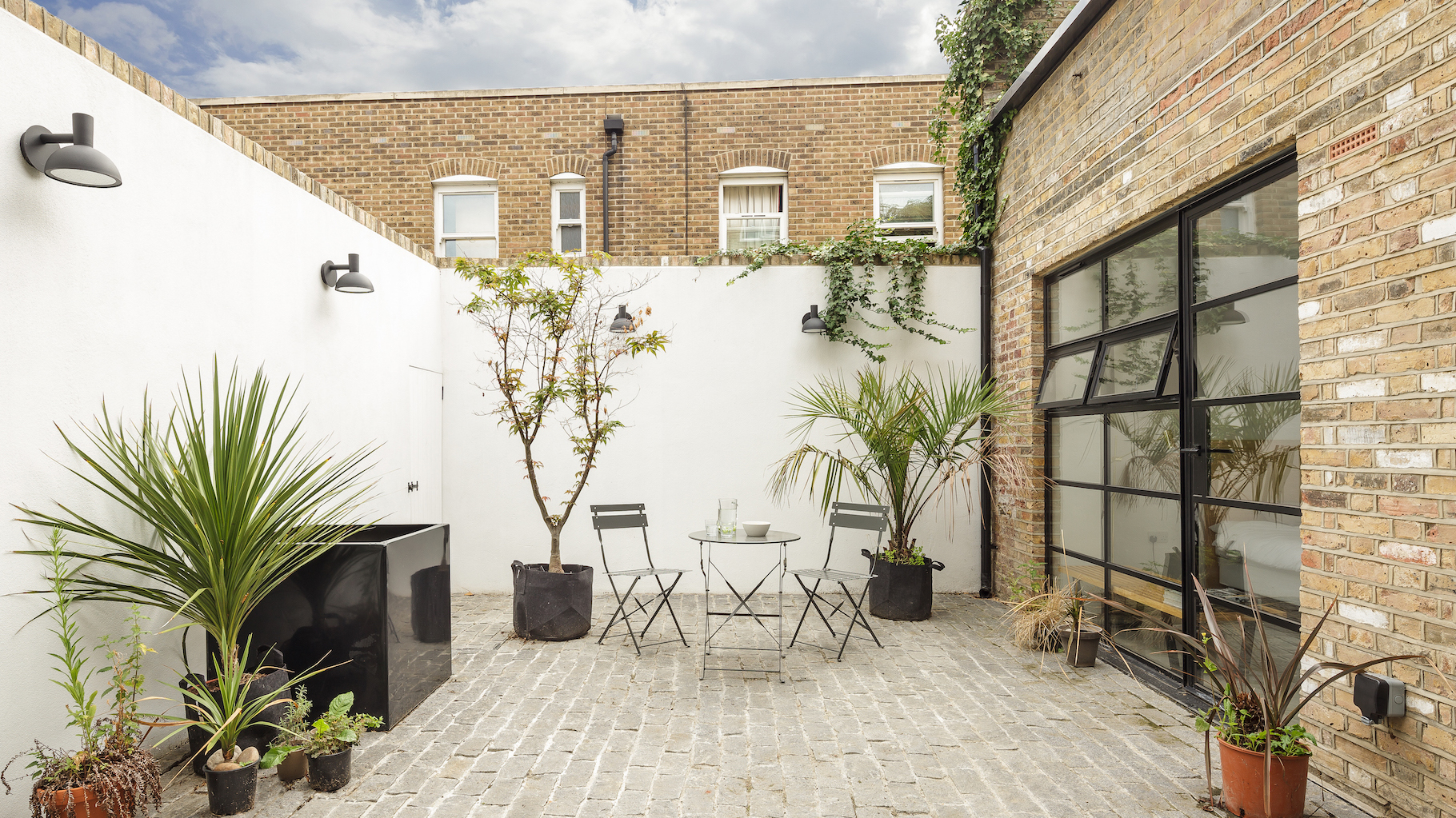
Creative budget patio ideas can transform an outdoor space. From simple DIY jobs that can make all the difference, to cost-effective materials and repurposing existing items, there's plenty which can be done on a shoestring.
Simple, but effective patio ideas start by assessing the space available and how to maximise it. Take a look below at our favourite steps for renovating or creating a new patio while on a budget.
1. Use existing patio materials if you can

Examine the space as it currently is — does it have pavers, decking or is it a spot of patchy lawn that you have ambition for?
For pavers and decking, instead of taking it up and replacing, make it safe to walk on and give it a good clean with the best pressure washer your budget can stretch to.
Restain decking with a good quality paint, suitable for outdoor timber. Not only will this improve the look of your patio area instantly and for not much money, but it will also protect the decking from further deterioration.
There are various garden paving ideas using paint that can give grey concrete slabs a new lease of life as well. This clever tile stencil idea for painting patio slabs is delicate and really cost-effective as an option to bring some interest to a patio area.
For those without an existing paved patio or deck, also consider if you can use these ideas on reclaimed materials. People throw and give away on perfectly good garden products all the time, so keep and eye out of local market groups for a gem that can be brought back to life for a bargain.
2. Buy lookalike pavers when laying a new patio
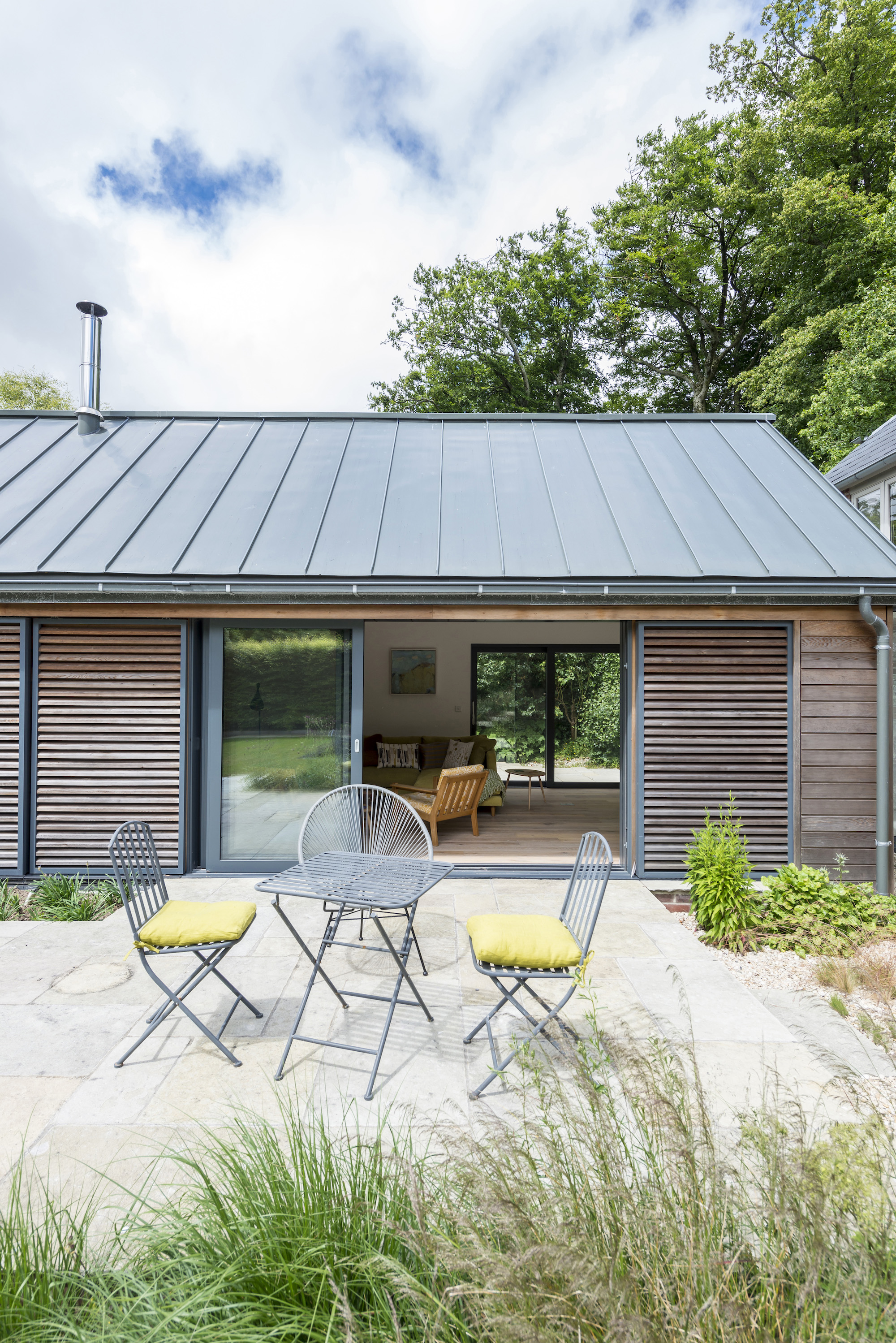
If you're creating a new patio space, consider more budget-friendly alternatives to real stone to keep patio costs down. You can now buy wood and stone-effect concrete slabs that are cheaper and, in some cases, more durable than the real thing.
Porcelain tiles are also becoming a firm favourite for outdoor areas too thanks to their resilience, low maintenance and ease of installation.
Finally, look out for end-of-line sales and seasonal discounts, which can make laying a patio, especially a small one, cost-effective.
3. Reuse building materials where you can
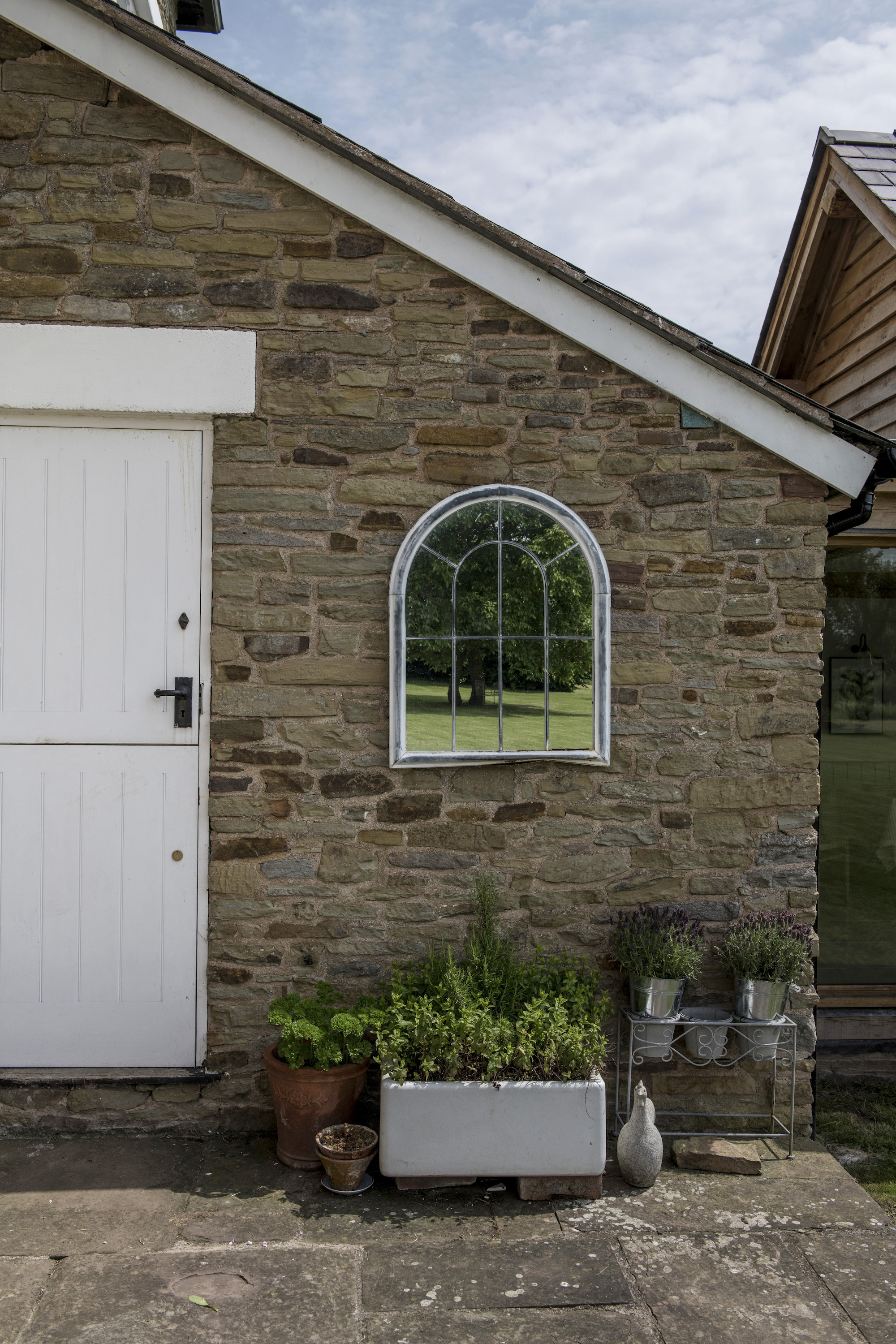
If you've undertaken a renovation or extension project and are now looking towards the garden, rubble is a great alternative to buying MOT 1, the material used for hardcore under new patio surfaces.
Bricks and stone from demolishing walls are worth hanging onto as well, as they can be used to create walls, beds, rockeries and other patio edging ideas to give it an instantly established feel.
If you've not undergone a significant project, think about other elements that can be reused in your patio. This tiny space has repurposed a Belfast sink for planting and an old mirror to make the space feel bigger.
4. Jump in with DIY jobs to save money
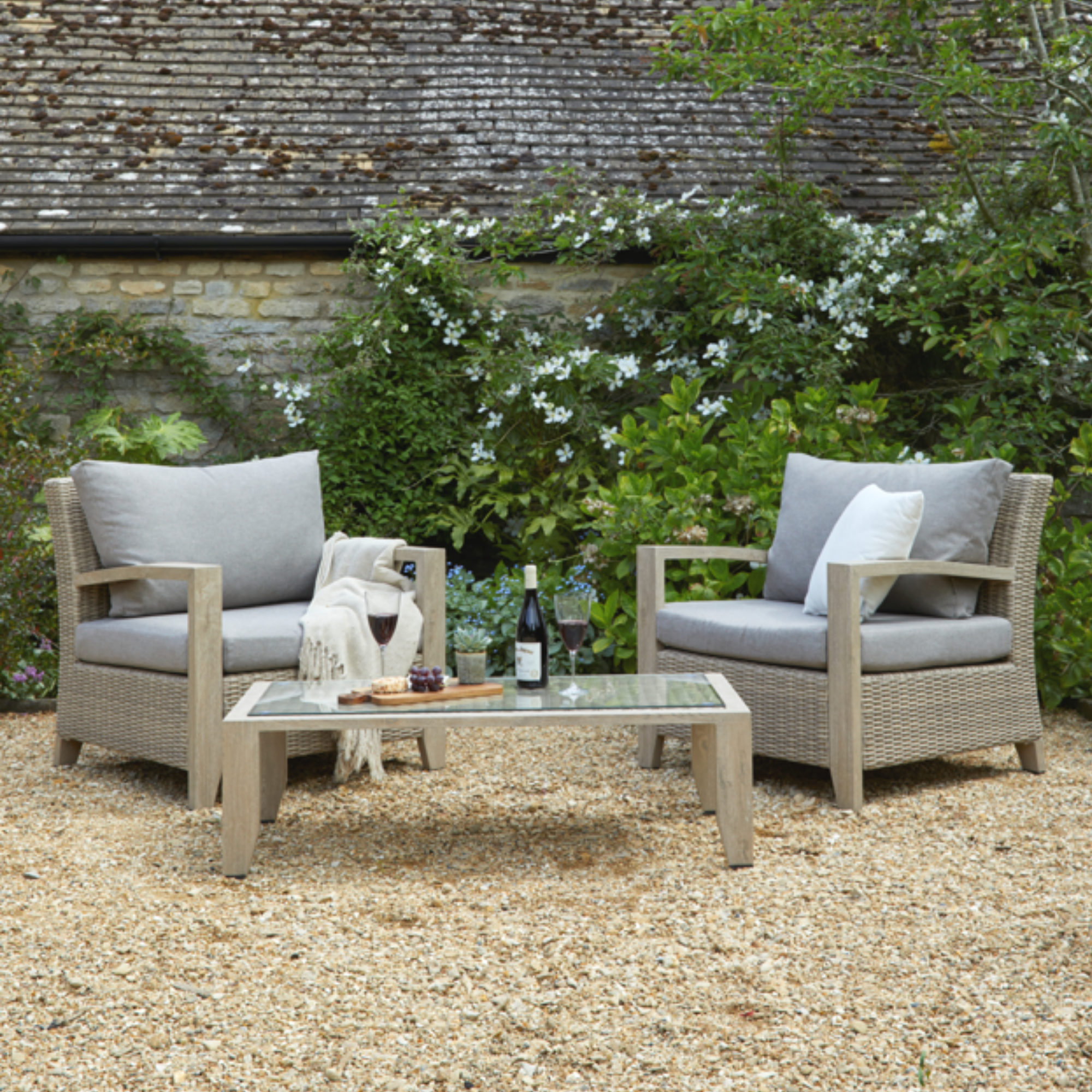
To save a substantial amount of money when creating a patio area, take on different jobs where you can on a DIY basis.
Jobs can range from the very easy, including repainting old furniture and washing pavers, to slightly more involved, such as laying the patio (gravel is a great budget choice that is easier to lay than pavers).
5. Invest in good quality furniture — old or new
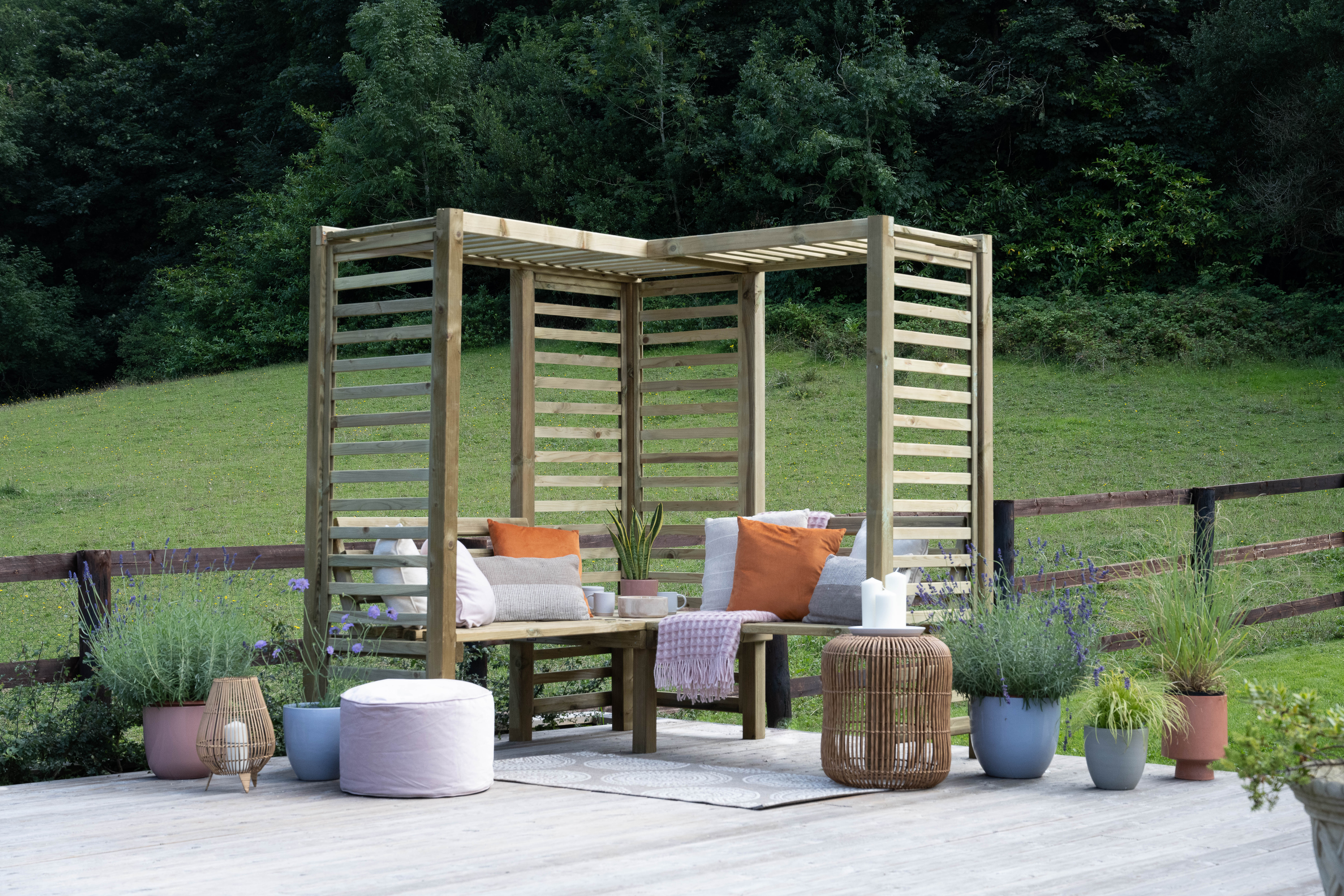
One of the most costly elements of creating a welcoming patio area is the furniture. New tables and chairs can be tough on the wallet and difficult to justify when British summers are, historically, grey.
However, given the heatwaves of recent years curating a space to work or relax outside is a must. To keep costs down look on ebay, Facebook Marketplace and Freecycle for tired furniture that others are getting rid of. Look for quality timber and steel that can be sanded (for wood) and repainted.
If you are buying new, this is definitely a place to spend where you can. Cheap garden furniture can be a false economy (requiring replacing in a few years), while well-made products will stand the test of time, working out cheaper in the long run.
6. Look at plant sourcing and alternatives

Pots and plants can be a relatively inexpensive way of transforming a patio. For those who like to potter around, look up local plant swaps and cuttings for a cheaper way to build a diverse and established garden.
However, if getting out there to deadhead and maintain multiple plants is not what you're after, then opt for low-maintenance garden ideas and cost-effective options. For instance, fake foliage and plants might sound tacky but there are some decent quality alternatives available now that can fool even the keenest eye. Or, keep your plant choices simple and fuss-free, for instance a potted tree which needs little intervention, rather than small bedding plants that die off come autumn.
7. Add simple, yet effective finishing details to your budget
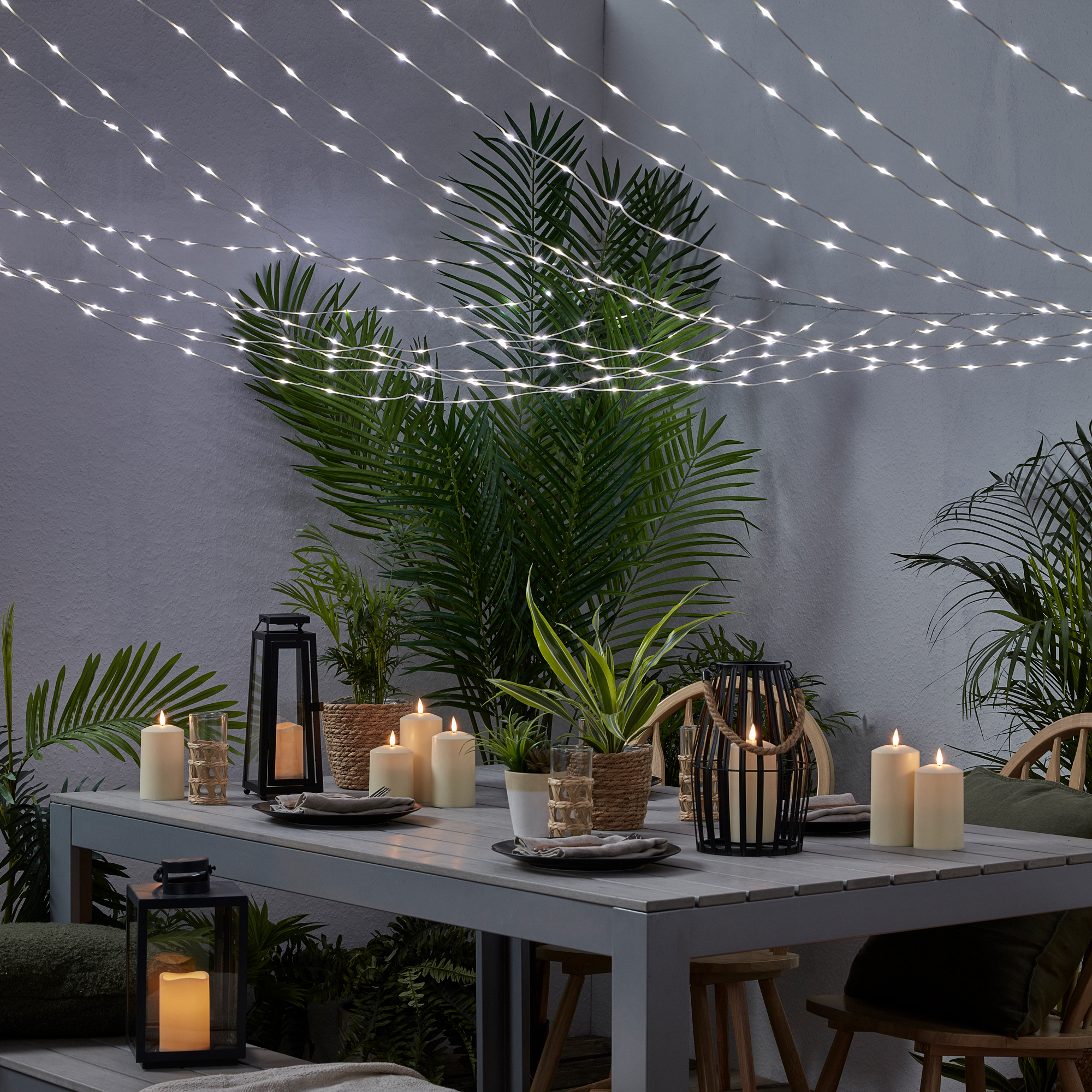
The final touches to an outdoor area take it from feeling uninviting to the place where you want to spend time long into the summer evenings.
Lighting is a key consideration and there are simple and effective ways to add lighting on a budget. Try out patio lighting ideas like battery or solar powered fairy or festoon lights; they provide a warm glow over the whole space, and bulbs can be replaced as you go.
Do you have a brick wall or fence nearby that has seen better days? Paint it in a contemporary colour that stands out, like this striking grey design. The garden is a space where you can be a little bolder with hues because if you don't like it it can be easily redone with minimal effort and cost.
Finally, get some outdoor cushions for that newly repainted furniture you've invested in. You can make your own fairly simply with decent quality waterproof material.
Get the Homebuilding & Renovating Newsletter
Bring your dream home to life with expert advice, how to guides and design inspiration. Sign up for our newsletter and get two free tickets to a Homebuilding & Renovating Show near you.
Amy is an interiors and renovation journalist. She is the former Assistant Editor of Homebuilding & Renovating, where she worked between 2018 and 2023. She has also been an editor for Independent Advisor, where she looked after homes content, including topics such as solar panels.
She has an interest in sustainable building methods and always has her eye on the latest design ideas. Amy has also interviewed countless self builders, renovators and extenders about their experiences.
She has renovated a mid-century home, together with her partner, on a DIY basis, undertaking tasks from fitting a kitchen to laying flooring. She is currently embarking on an energy-efficient overhaul of a 1800s cottage in Somerset.

